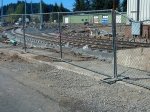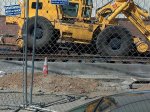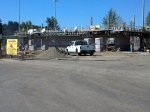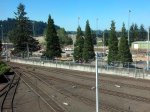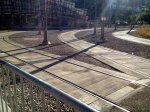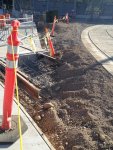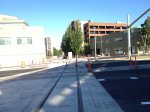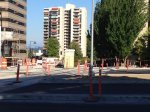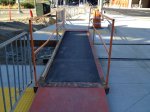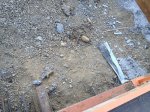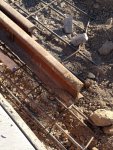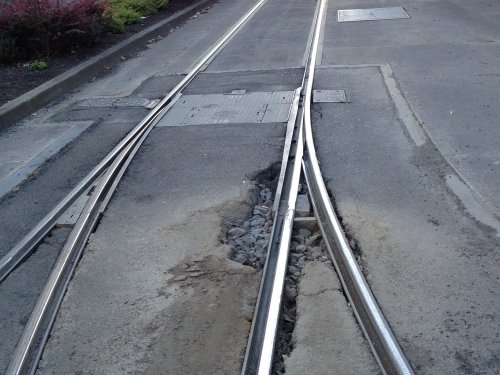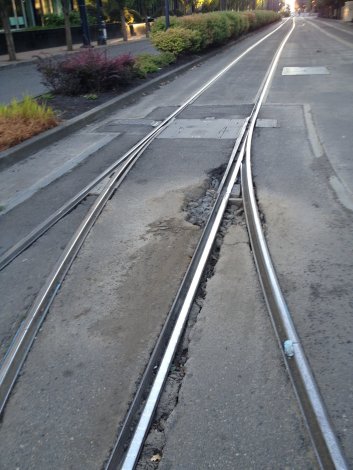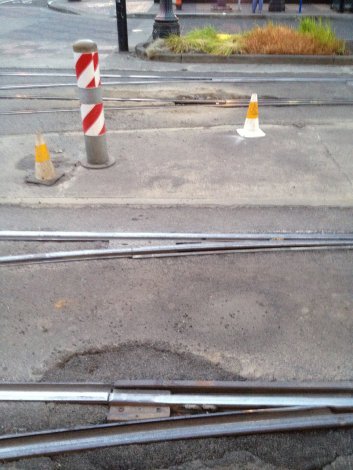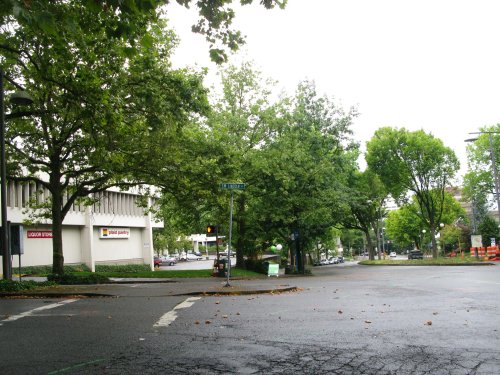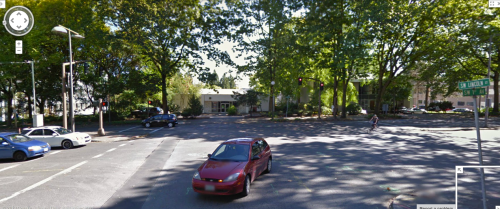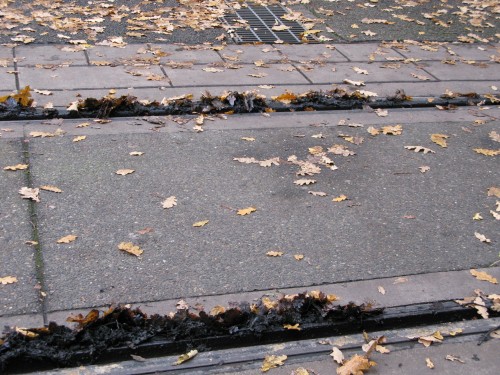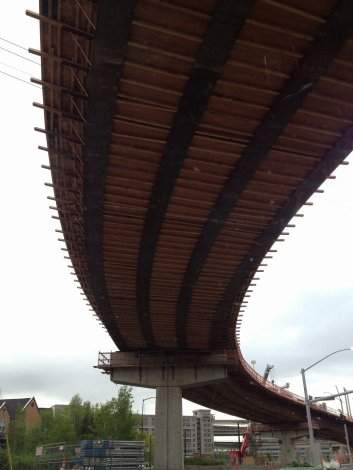By the numbers
This is based on an internal document, but there’s nothing confidential about it and really anyone could work the numbers out if they wanted to. On top of that I think it’s interesting and yet another one of those “It’d be nice if the public saw this” topics, so we’re running with it.
 Westbound on the Blue Line from Gresham
Westbound on the Blue Line from Gresham
One Blue Line trip westbound from Cleveland Ave to Hatfield Gov Center goes through 94 intersections, 62 pre-empt signals, 59 switches, 47 platforms, 34 ABS signals, 30 gated crossings, 14 Z-crossings, 7 ABS/pre-empt combination signals, and five speed zones in about an hour and 40 minutes from end to end.
A full day’s shift on the Blue Line is two round trips. That means if you have a straight shift on the Blue Line, you’re going through 376 intersections, 248 pre-empts, 236 switches, 188 platforms, 136 ABS signals, 120 gated crossings, 56 Z-crossings, 28 combination signals, and 20 speed zones on a daily basis. And figure in maybe 7 or so train orders that change the rules.
 Turn around and do it all again, eastbound on the Blue Line from Hillsboro
Turn around and do it all again, eastbound on the Blue Line from Hillsboro
In a year? That’s 90,240 intersections, 59,920 pre-empts, 56,640 switches, 43,200 platforms, 32,640 ABS signals, 28,800 gated crossings, 13,400 Z-crossings, 6720 combination signals, 4800 speed zones, and 1680 train orders.
Annually, that pretty much means there are more than 305,440 opportunities per operator to make a mistake if they’re not attentive. This could be due to personal operator error (e.g. not seeing a signal properly or disregarding a train order) or not properly reacting/responding to problems in the alignment, such as signal failures, switch malfunctions, or gate arm malfunctions. And of course there are countless opportunities for the public to cause problems that operators need to be watchful for, such as trespassing, causing safety hazards on platforms, running in front of moving trains, or reaching legendary levels of dumb things to do with their cars.
 Case in point.
Case in point.
And if anything DOES go wrong, that can often bring in a whole slew of new train orders, reroutes, or sometimes even finding that you’re going to go for another trip when you were supposed to be getting relieved. So add in another set of those numbers for your extra work.
The original intent from TriMet with this was to remind operators to never become complacent or get distracted because of the potential for so many things can go wrong. Fair enough, because the moment you let your mind wander or run on autopilot is when things can and will go wrong. For example, you can’t assume that just because you have your pre-empt that no one will run the red light, or that someone won’t try to walk, bike, or drive around lowered crossing gate arms in front of you. A lot of the work in operating a train is compensating for safety hazards created by the public or the environment – you always have to be prepared for known hot spots and be ready to quickly react if you encounter an unexpected hazard.
 The new head of rail training
The new head of rail training
At the same time, along with this great video piece on rail operation that KATU did last year, this nicely illustrates that if you think rail operators just sit there all day and that operating a train must be easy since there’s no steering involved (and to a similar extent, if you think that any idiot could be a good professional bus driver because just about everyone over the age of 18 knows how to drive), YOU ARE WRONG. No, you don’t need a college degree to do either of these jobs, but when you take into consideration the skill involved to drive a bus or operate a train safely with everything the world and the public throws at you (sometimes literally, especially if you’re a bus driver!), the work is far from “easy” and deserves respect – both from the public and from some of the TriMet muckymucks who often downplay and lose sight of the hard work that operators do.
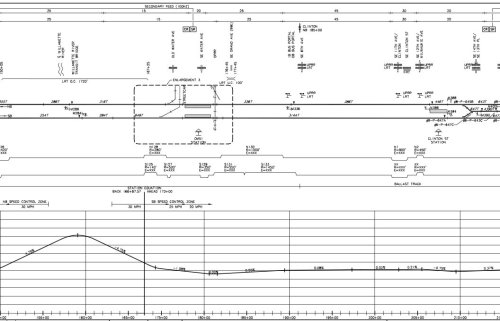 Orange Line’s new bridge, OMSI, and Clinton platforms
Orange Line’s new bridge, OMSI, and Clinton platforms 


